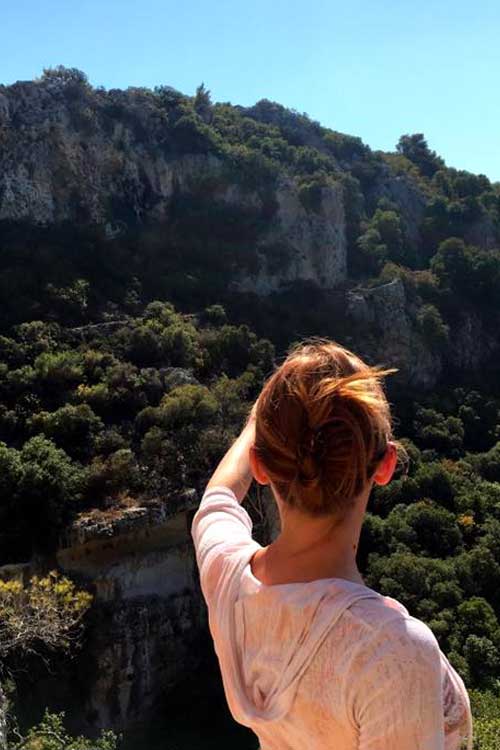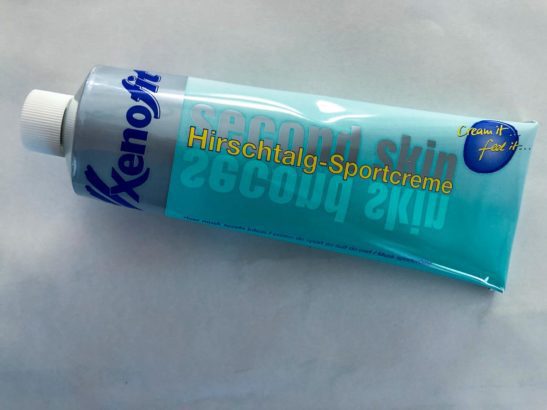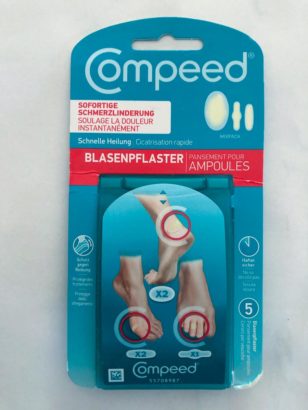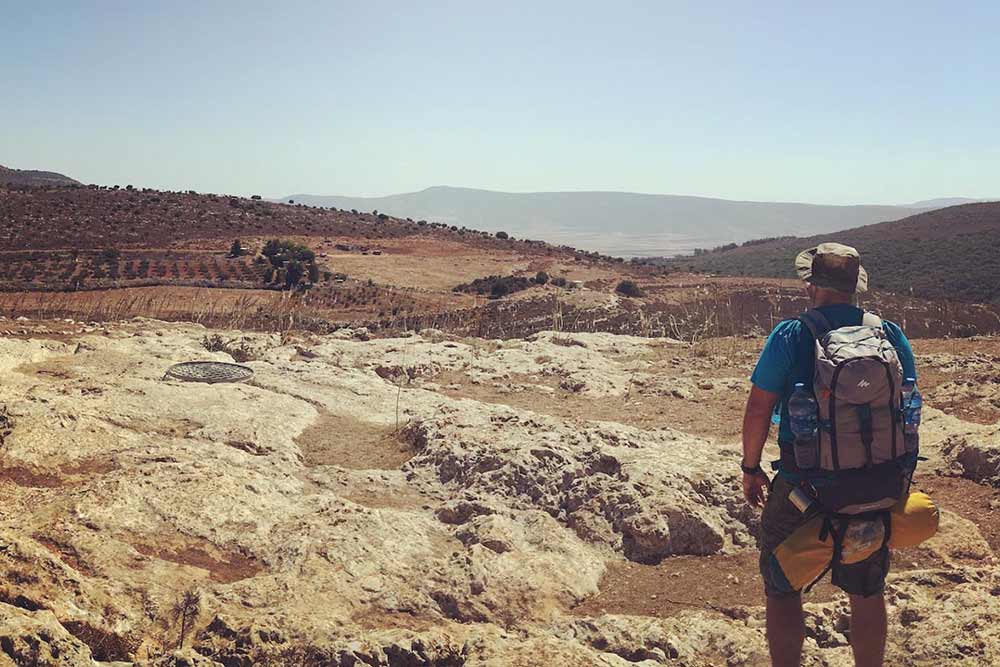Every step hurts, and my feet burn. Nevertheless, I try to take each step carefully, despite the rocky terrain. “Left, right, left, right,” I mumble to myself. This goes on for hours. As far as my feet will take me. At some point, the pain takes over. I have lost all sight of the landscape. Battles rage in my head while the stabbing pain of my feet throbs in my head. I don’t want to stop, but I can’t move on.
I don’t want to stop, but I can’t move on.
The soles of tWelcome to the theme series “Hiking on hot days”.he feet are covered with large torn blisters. The toes are bloody. No, even the best blister or pressure plaster won’t help here. My feet need two weeks of treatment and rest before I can walk normally again. That lesson many years ago could not have been any clearer.
Nature and hiking in blood
I spent much of my childhood and youth in the forest. As a child it was my biggest playground, as a teenager it was my mountain biker’s paradise, and when hiking, I sought out long and rustic routes to experience the remoteness and tranquillity of the wilderness.





In Israel, I continue my passion for hiking and outdoor trips, both professionally as a tour guide and privately with Alex, who loves being outside as much as I do. When I came to Israel, I quickly hooked on the nature and wilderness here: four different climates, new destinations, dangers and adventures.
Welcome to the theme series “Hiking on hot days”.
Today it’s all about avoiding blisters. I have a number of tips for you.
1.) Shoes have to fit!
That is a basic rule. That’s why I always buy my shoes at the outdoor shop of our friend, Lili (https://www.soldier-traveler.co.il/). Among other things, she has a small running ramp where you can test the shoes on slopes. I notice immediately whether my toes bump uncomfortably in the front of the shoe when I run downhill. Why is that so important? It’s simple! If the shoes don’t fit properly, blisters and injuries are inevitable.
Small tours may be possible with “suboptimal” shoes, but multi-day tours, including heavy bags, are a different matter. I will discuss different types of shoes in a later article.
I’ll say this much: I use three types of hiking shoes: outdoor sandals, hiking boots and trekking shoes. (More on this in another article)



2.) The right socks
I cannot list how many different hiking and sports socks I have tested. In the meantime, I use socks made of a combination of bamboo, cotton and/or merino wool. I can only advise you to test the socks yourself. The thickness of the socks is also important. In the past, I often used thin trekking socks. But on longer tours, there were often friction points and blisters. Especially on multi-day tours, I use different types of medium-thin socks. More about this in the practical tips.


3.) You can’t do it without training (multi-day tours or long-day tours).
I know it all too well. The holiday is just around the corner and the weeks before the trip were filled to the brim. No time to prepare. That can be exhausting. I too often have little time to prepare. Nevertheless, I start several weeks before the first larger tours with small 10 km routes and light luggage. Shortly before the first multi-day tour, I am then at 20 km and 15 kg of luggage. If you have a reasonable level of fitness, you should have done a 15 km tour at least once or twice with a pack and hiking boots.
But fitness isn’t everything because blisters are often caused by shoes and backpacks which we are not used to wearing. A backpack can also cause various friction injuries and irritations.
On very hot days in Israel, I have up to 5 liters water with me.
Even though I walk barefoot most of the time in summer, I, unfortunately, have sensitive feet. I tend to get blisters quickly. That’s why I sought advice from a professional hiking years ago, acquired knowledge and knitted together tips from it, which in combination helped me a lot.
And now: Practical tips
Just wear your hiking boots at home and in between.
Before hiking tours, I wear my hiking boots at home from time to time. Always break in new shoes.
No freshly washed socks
Yes, that sounds strange. It doesn’t have to be stinky socks, but you should wear them once in a while, e.g. when shopping. Very important: Never put good hiking socks in the dryer!
Deer tallow cream- the ultimate preventative against blisters.
This is a special cream that significantly and noticeably reduces friction. Before every tour and during breaks, I


Speaking of breaks, these are important and not just time to eat a roll.
I look at the dry landscape in Israel while hiking and in great heat.
A hike in late summer at 35 degrees. Breaks are part of the game
Especially on tours with heavy luggage, I take a break every two hours (or after about 12-14km at any rate Then I take off my socks and shoes and put them in the sun to dry, if possible. It has been beneficial to alternate between two pairs of socks. I tie the socks I don’t use to my backpack. My method has the following advantages:
1.) Shoes and socks smell less unpleasant.
2) It is more pleasant to walk with dry feet.
3) I can check the condition of my feet.
Cutting toenails
Long toenails can lead to painful infections. Therefore, trim them a few days before the tour!
During the tour: When to act?
In the past, I used to bite my tongue or tell myself, “Oh, it’ll be fine!” My experiences were unpleasant enough: I ran my feet bloody, lost toenails or got painful blisters. Today, I take action as soon as I notice that something feels uncomfortable – something is rubbing or pressing. Because one kilometre further on, it can already be too late. False pride or a “it’s still possible” is inappropriate here. Especially if you are on the road for several days, it is better to take one break too many.
A blister is coming
Either I already pull out a blister pressure plaster (or regular plaster) to reduce friction and pressure, or I apply the deer tallow cream again.
It’s too late, the blister is there.
Here, too, my first aid is a blister plaster from Compeed (in pharmacies or Amazon): Compeed Blister Plaster Mixpack). If the blister is large and full of f


Now you have to carefully puncture the blister in two places so that the liquid drains off. Then disinfect the area again and apply the blister plaster. If possible, take a break so that the irritated foot can recover a little.
Caution: If the spot becomes inflamed and permanently painful, it may be necessary to stop the tour.
I don’t wish you a trip cancellation. Instead, I hope you experience great hiking tours, free of complaints but with a good portion of “feelings of happiness” and sore muscles in the evening. If you’re wondering why I’m sometimes on the road with more than 15 kg of luggage: At higher temperatures, I have to carry up to 5 L of water due to the challenging tours with few “water filling stations”.
And now have fun! Go outside! If you have a tip or two, write to me, I’ll be happy to add it and, of course, mention you by name.
Best wishes,
Ben


















What do you think?